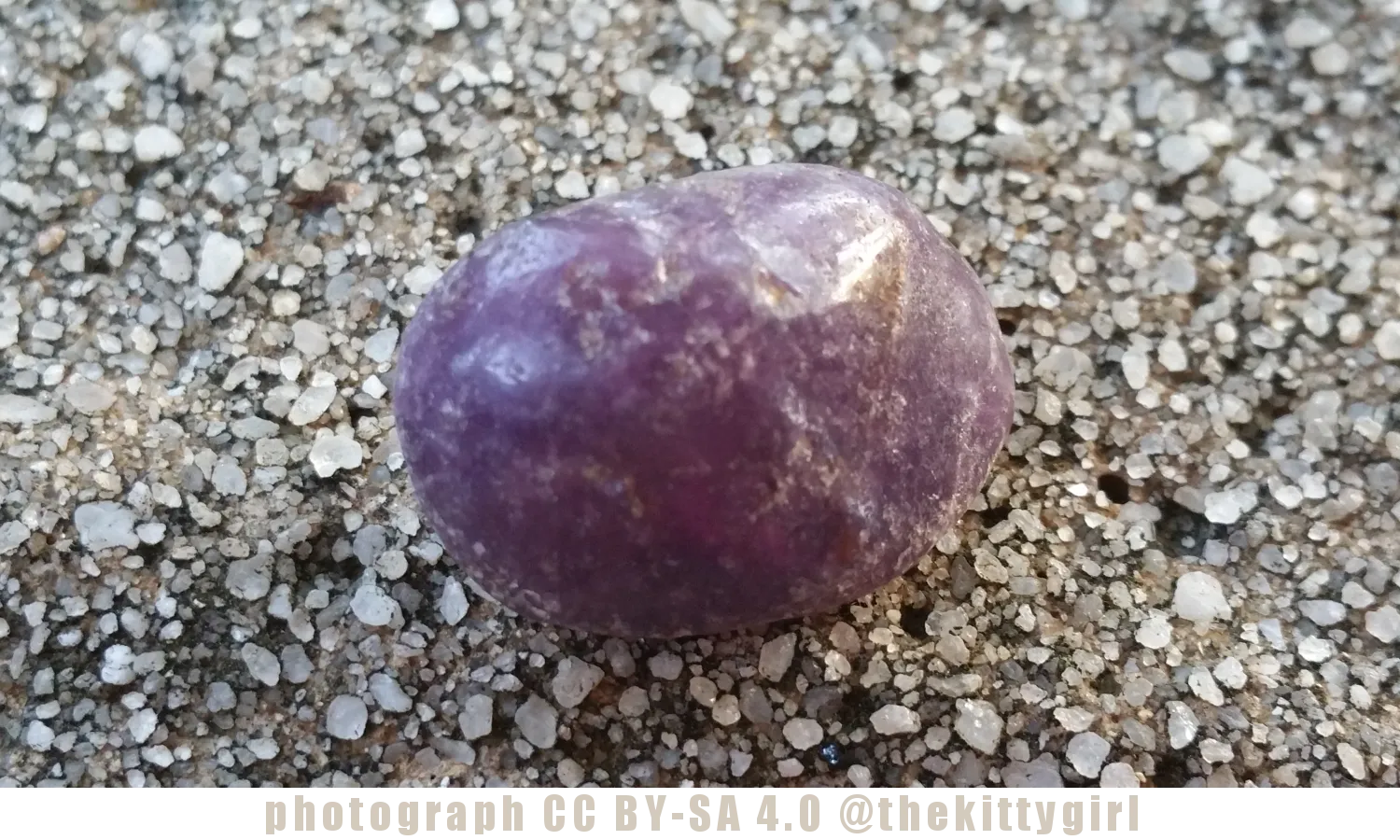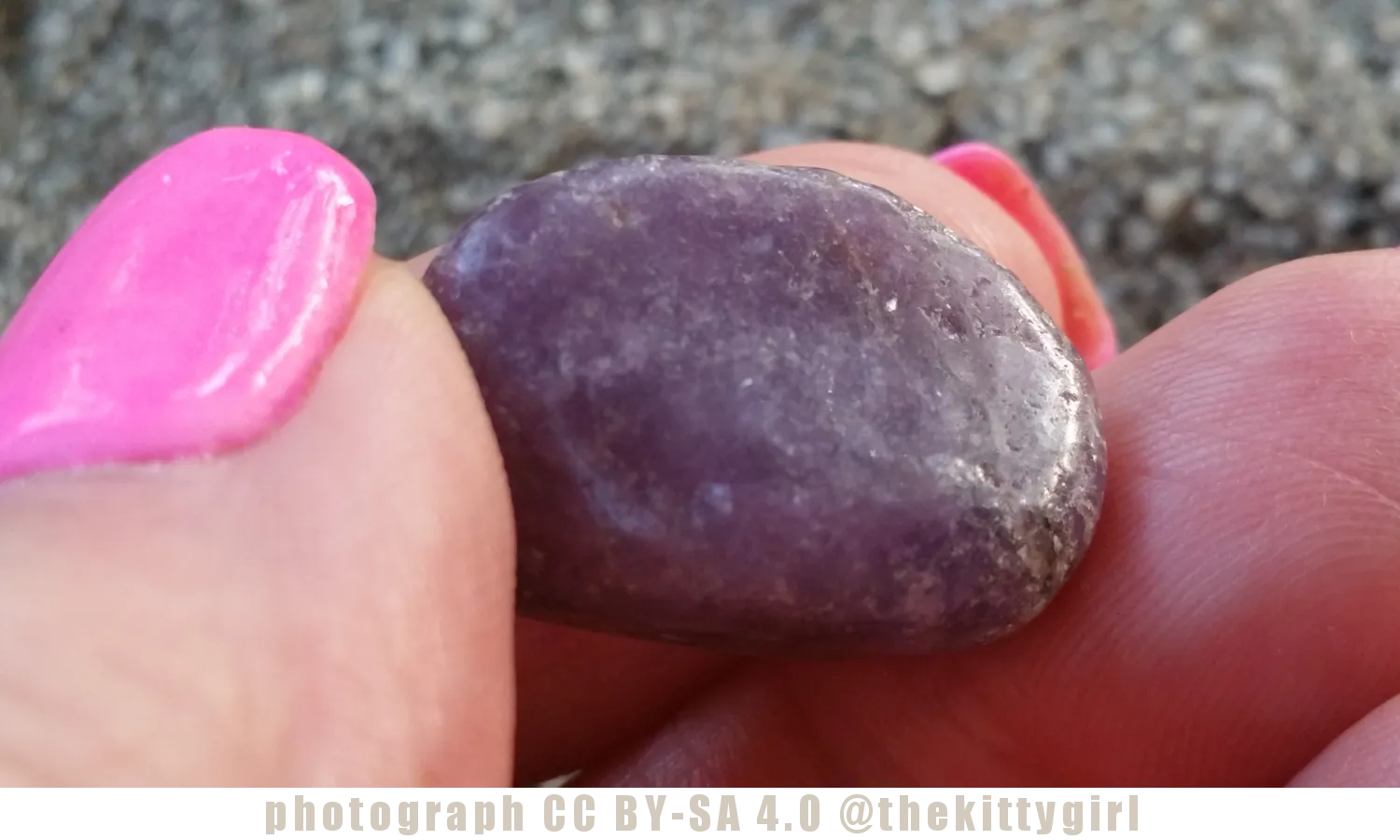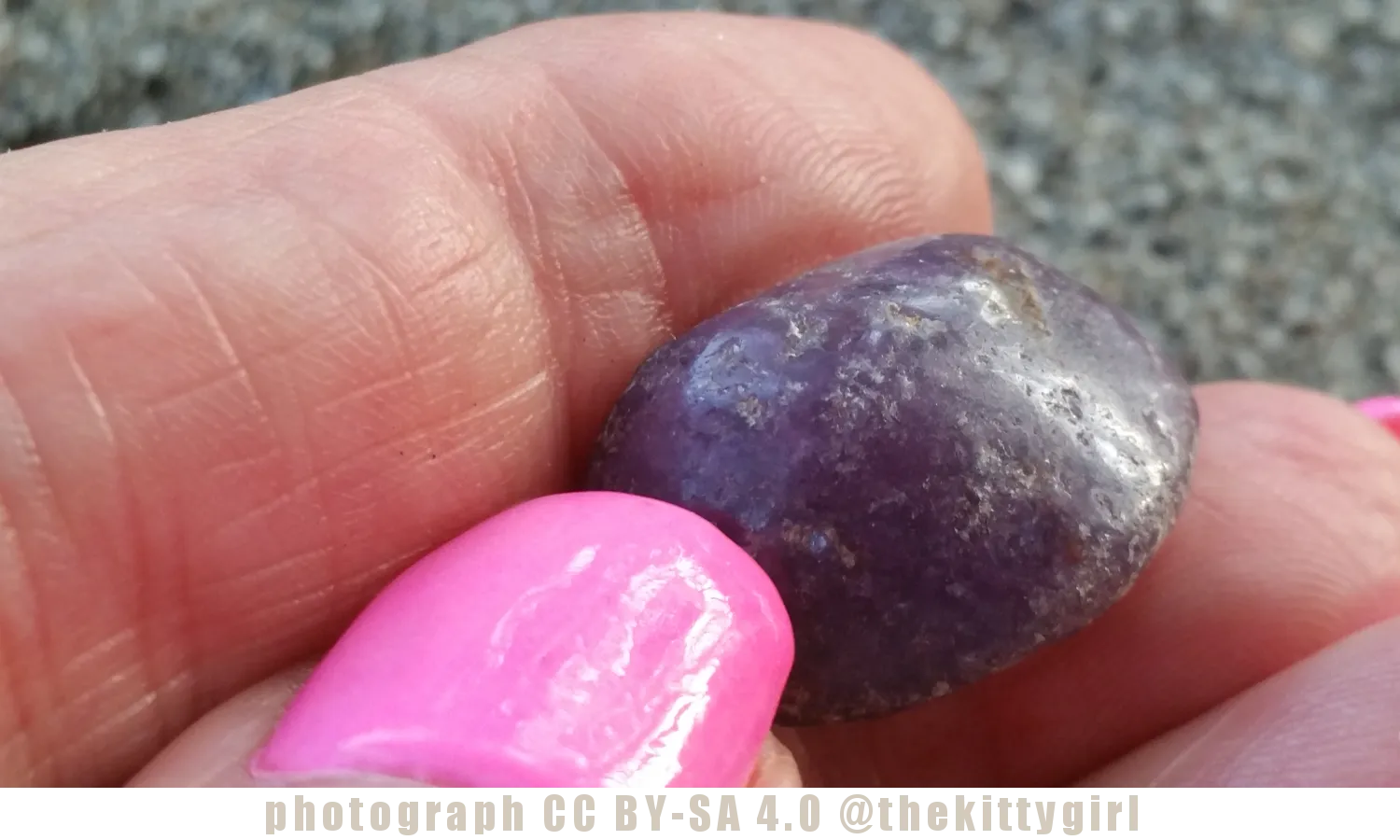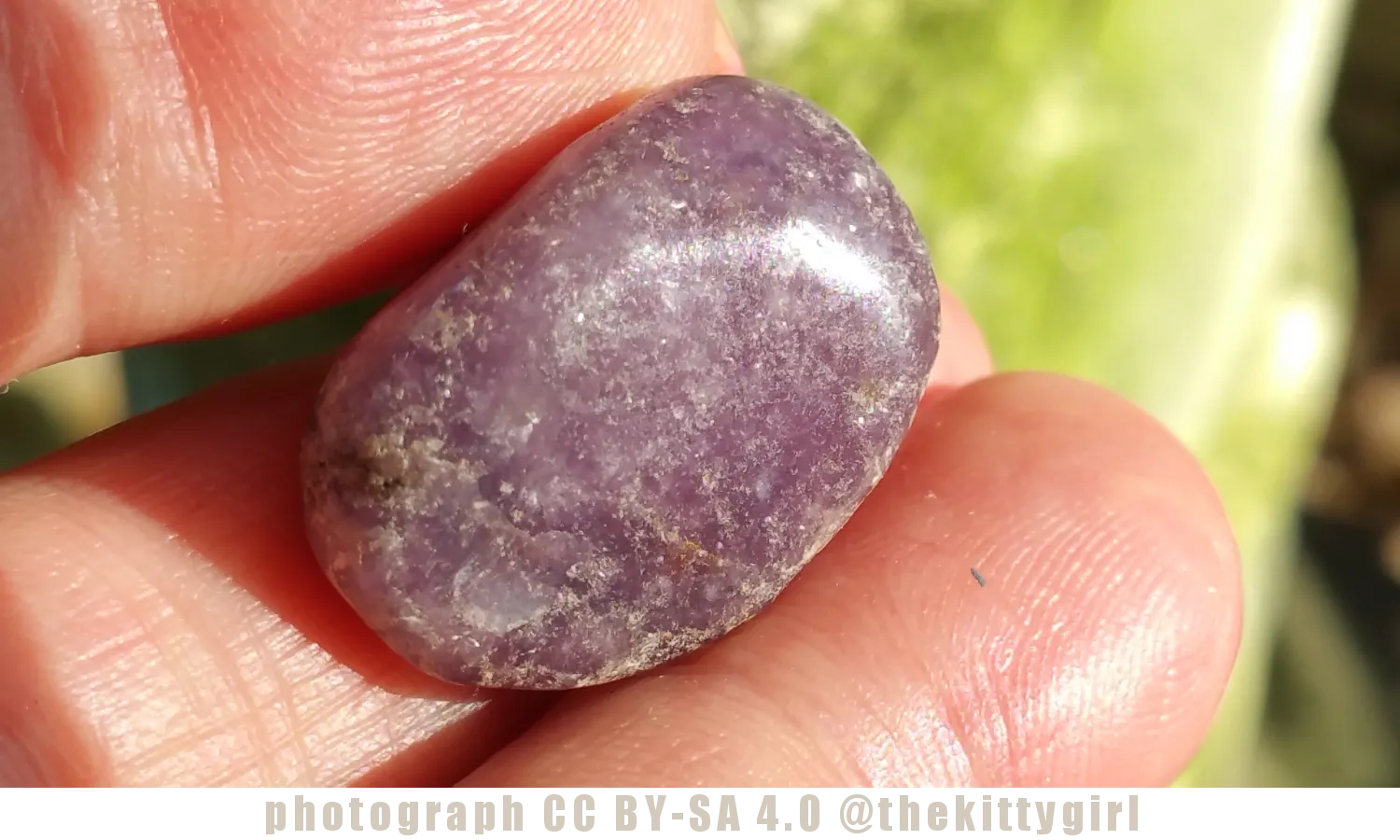I recently wrote about Muscovite mica and talked about its properties of being a good electrical insulator and fire-retardant, among other things. Also, I mentioned other types of mica and said that I had two other types in my collection. This is one of them: Lepidolite, a lovely little stone with a delightful purple color and sparkly bits in it!
Lepidolite does not have the same properties as muscovite and isn't used as an insulator or as a fire-retardant, but it is valuable as a source of the element lithium. It was a primary source of lithium in the early 1900s, but more economical ways of extracting lithium have been developed since then from deposits found in South America, so lepidolite is now only considered a secondary source. [1] Lepidolite is also chipped-apart as a source of flake mica, and can be used in the production of glass and enamel.

Lepidolite is rather rare in nature, too, as sufficient lithium deposits for its formation are not commonly found. So, I was rather surprised, in hindsight, that I was able to obtain this specimen. I've had it so long that I do not recall what I paid for it, but I doubt it would have been more than ten USD or so, perhaps less.
Despite the high concentration of lithium in this mineral, the color comes from trace amounts of manganese. Depending on the percentage of manganese, lepidolite can appear purple, pink, or occasionally red.

The same as muscovite, lepidolite often forms in sheets that are stacked together in a 'book' which can be peeled-apart one sheet at a time. Sometimes, however, it is found in a what geologists call a 'massive' form, which means it is compressed into a solid stone, like my specimen.

Lepidolite was originally discovered in the region of Moravia in the Czech Republic, but has been found subsequently in other areas around the world. The mineral has been found on all continents, including on Mt. Madison in Antarctica!
There are at least three mines in China where lepidolite is found in rocks mixed with quartz and/or feldspar. Such a mixture is called "Purple Jade" even though lepidolite is not true jade. The inclusion of quartz makes the rock harder than a pure lepidolite specimen, and is often carved into ornamental objects.

I find that holding stones/crystals and playing with them is somewhat calming, satisfying, and fun. There is something enjoyable about running fingers over them, feeling the smoothness, roughness, and peculiar bumps and oddities of each individual piece. I have even seen many different stones marketed as "worry stones," with the suggestion of carrying them in one's pocket for use when one is feeling worried or stressed.
Lepidolite, however, is considered by some to be the perfect stone for calming anxiety and easing depression. Perhaps it's because of the purple color (which is considered a 'spiritual' color) or perhaps it is because of the lithium contained within the stone. I have often wondered if handling such stones allow trace amounts of the constituent materials to be deposited onto the skin and absorbed, but I have never found any research to refute or substantiate that idea. But, who knows...?!?!?
SOURCES 1 Geology.com: Lepidolite 2 Mindat.org: Lepidolite 3 Wikipedia: Lepidolite

Goldstone • Aventurine • Amber • Black Star of India
Ruby – Part 1: Crystals • Ruby – Part 2: Jewelry • Larimar
Citrine Crystal • Amethyst Crystal • Kitty Geode • Phoenix Crystal
Barbeque & Amethysts • Salt Lamps • Trilobite • Arrowhead
Garden Quartz, freeform • Granite Quarry № 2 • Apophyllite
Rocks from Space! • Quartz Rock: Raw versus Polished
Chrysocolla • Tourmaline • Bornite • Goethite • Small Quartz Crystal
Smoky Quartz • Tibetan Quartz • Amazonite Beads • Zoisite
Rutilated Quartz • Garnet • Amazonite Sphere • Lapis Lazuli Mala
Amethyst Point • How Rocks Get Their Color • Red Jasper
Ring, Ring! Amethyst Calling! • Lapis Lazuli • Turitella Agate




to learn more about either of these projects, please visit: @heyhaveyamet or @theterminal
06-Jul-2020
Return from Lepidolite to 𝕜𝕚𝕥𝕥𝕪's Web3 Blog

